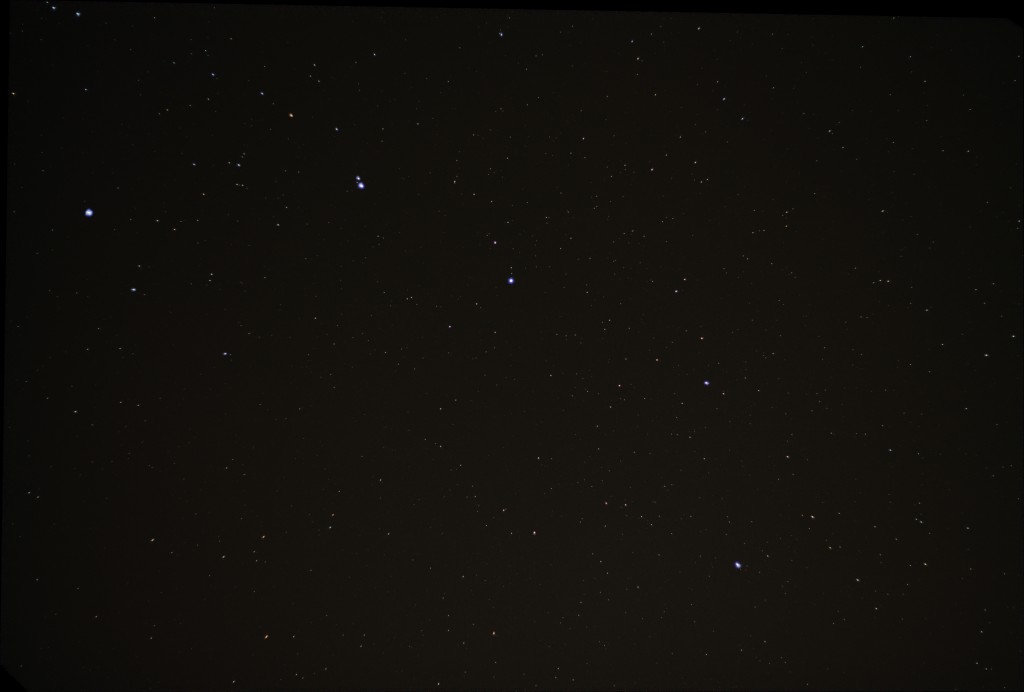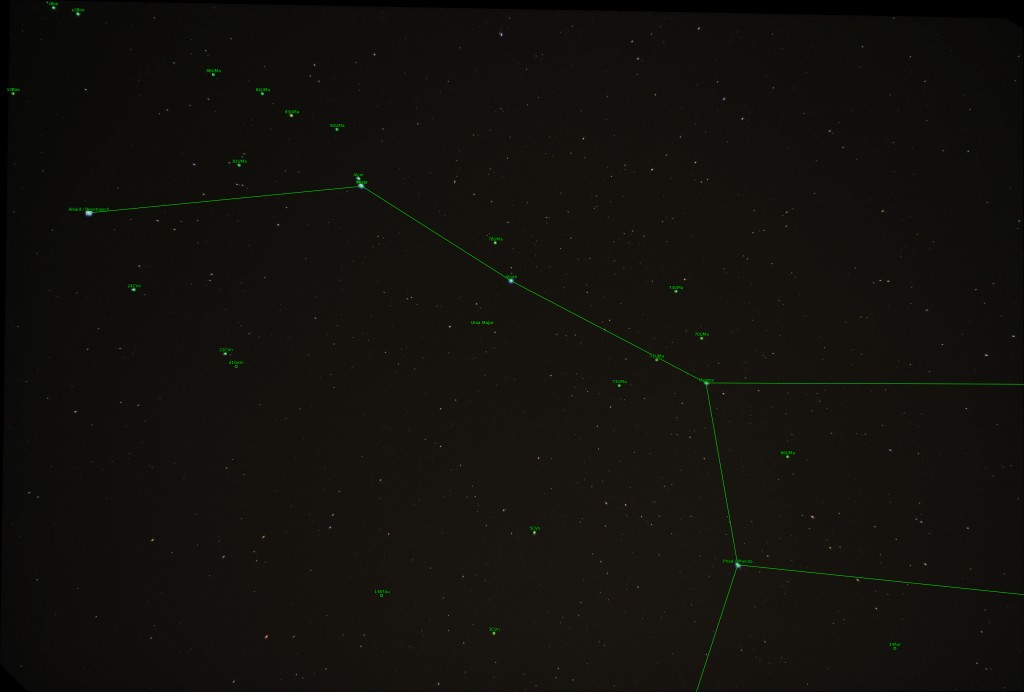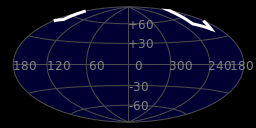Ursa Major (Latin: “Larger Bear”), also known as the Great Bear, is a constellation visible throughout the year in most of the northern hemisphere. It can best be seen in April. It is dominated by the widely recognized asterism known as the Big Dipper or Plough, which is a useful pointer toward north.
The seven brightest stars of Ursa Major form the asterism known as the Big Dipper in the United States and Canada, or the Plough in the United Kingdom and Ireland.
Notable features
Stars
Except for Dubhe and Alkaid (Eta Ursae Majoris), the stars of the Big Dipper all have proper motions heading toward a common point in Sagittarius. A few other such stars have been identified, and together they are called the Ursa Major Moving Group.
Mizar, a star in the Big Dipper, forms the famous optical double star with Alcor.
The stars Merak (β Ursae Majoris) and Dubhe (α Ursae Majoris) are known as the “pointer stars” because they are helpful for finding Polaris, also known as the North Star. By visually tracing a line from Merak through Dubhe and continuing, one’s eye will land on Polaris, accurately indicating true north.
W Ursae Majoris is the prototype of a class of contact binary variable stars, and ranges between 7.75m and 8.48m.
47 Ursae Majoris is a Sun-like star with a three-planet system.
47 Ursae Majoris b, discovered in 1996, orbits every 1078 days and is 2.53 times the mass of Jupiter.
47 Ursae Majoris c, discovered in 2001, orbits every 2391 days and is 0.54 times the mass of Jupiter.
47 Ursae Majoris d, discovered in 2010, has an uncertain period, lying between 8907 and 19097 days; it is 1.64 times the mass of Jupiter.
The star is of magnitude 5.0 and is approximately 46 light-years from Earth.
Deep-sky objects
Several bright galaxies are found in Ursa Major, including the pair Messier 81 (one of the brightest galaxies in the sky) and Messier 82 above the bear’s head, and Pinwheel Galaxy (M101), a spiral northeast of η Ursae Majoris.
The spiral galaxies Messier 108 and Messier 109 are also found in this constellation. The bright planetary nebula Owl Nebula (M97) can be found along the bottom of the bowl of the Big Dipper.
M81 is a nearly face-on spiral galaxy 11.8 million light-years from Earth. Like most spiral galaxies, it has a core made up of old stars, with arms filled with young stars and nebulae.
Along with M82, it is a part of the galaxy cluster closest to the Local Group. M82 is a galaxy that is interacting gravitationally with M81. It is the brightest infrared galaxy in the sky.
M97, also called the Owl Nebula, is a planetary nebula 1,630 light-years from Earth; it has a magnitude of approximately 10. It was discovered in 1781 by Pierre Méchain.
M101, also called the Pinwheel Galaxy, is a face-on spiral galaxy located 25 million light-years from Earth. It was discovered by Pierre Méchain in 1781. Its spiral arms have regions with extensive star formation and have strong ultraviolet emissions. It has an integrated magnitude of 7.5, making it visible in both binoculars and telescopes, but not to the naked eye.
NGC 2787 is a lenticular galaxy at a distance of 24 million light-years. Unlike most lenticular galaxies, NGC 2787 has a bar at its center. It also has a halo of globular clusters, indicating its age and relative stability.
NGC 3079 is a starburst spiral galaxy located 52 million light-years from Earth. It has a horseshoe-shaped structure at its center that indicates the presence of a supermassive black holes. The structure itself is formed by superwinds from the black hole.
NGC 3310 is another starburst spiral galaxy located 50 million light-years from Earth. Its bright white color is caused by its higher than usual rate of star formation, which began 100 million years ago after a merger. Studies of this and other starburst galaxies have shown that their starburst phase can last for hundreds of millions of years, far longer than was previously assumed.
NGC 4013 is an edge-on spiral galaxy located 55 million light-years from Earth. It has a prominent dust lane and has several visible star forming regions.
I Zwicky 18 is a young dwarf galaxy at a distance of 45 million light-years. The youngest known galaxy in the visible universe, I Zwicky 18 is about 4 million years old, about one-thousandth the age of the Solar System. It is filled with star forming regions which are creating many hot, young, blue stars at a very high rate.
The Hubble Deep Field is located to the northeast of δ Ursae Majoris.
Extrasolar planets
HD 80606, a sun-like star in a binary system, orbits a common center of gravity with its partner, HD 80607; the two are separated by 1,200 AU on average. Research conducted in 2003 indicates that its sole planet, HD 80606 b is a future hot Jupiter, modeled to have evolved in a perpendicular orbit around 5 AU from its sun.



Image Details
?
Description from Wikipedia